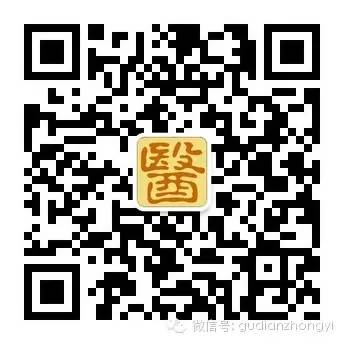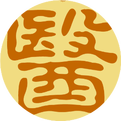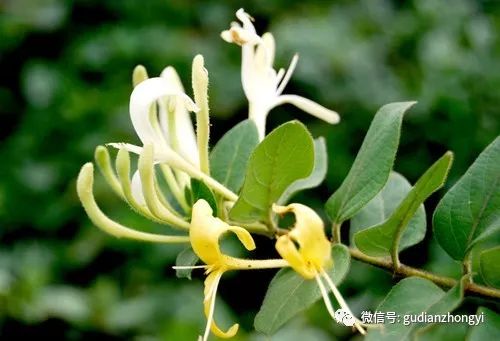 Daoist Physician Lao Ding Discusses Medical PrinciplesObserving and Practicing in Daily LifeClick the phonetic symbol above to listen, or log in to “Ximalaya” to search
Daoist Physician Lao Ding Discusses Medical PrinciplesObserving and Practicing in Daily LifeClick the phonetic symbol above to listen, or log in to “Ximalaya” to search Honeysuckle (Jin Yin Hua), blooms from late March to April and continues into summer, with a faint fragrance and red-tipped flowers. When first opened, the flowers are white, turning yellow after a day or two, hence the name Honeysuckle.Additionally, because it has two flowers on one stem, with the stamens protruding, they appear in pairs, resembling a couple, and are likened to mandarin ducks dancing together, thus it is also known as Yuan Yang Teng.Honeysuckle has another common name, Ren Dong. In winter, the old leaves fall, and new leaves sprout from the leaf axils, remaining evergreen, hence it is called “Ren Dong”. Honeysuckle was first recorded in the medical classic Shennong’s Herbal Classic during the Han dynasty, and the name Honeysuckle is said to have been given by the Medicine King Sun Simiao.
Honeysuckle (Jin Yin Hua), blooms from late March to April and continues into summer, with a faint fragrance and red-tipped flowers. When first opened, the flowers are white, turning yellow after a day or two, hence the name Honeysuckle.Additionally, because it has two flowers on one stem, with the stamens protruding, they appear in pairs, resembling a couple, and are likened to mandarin ducks dancing together, thus it is also known as Yuan Yang Teng.Honeysuckle has another common name, Ren Dong. In winter, the old leaves fall, and new leaves sprout from the leaf axils, remaining evergreen, hence it is called “Ren Dong”. Honeysuckle was first recorded in the medical classic Shennong’s Herbal Classic during the Han dynasty, and the name Honeysuckle is said to have been given by the Medicine King Sun Simiao.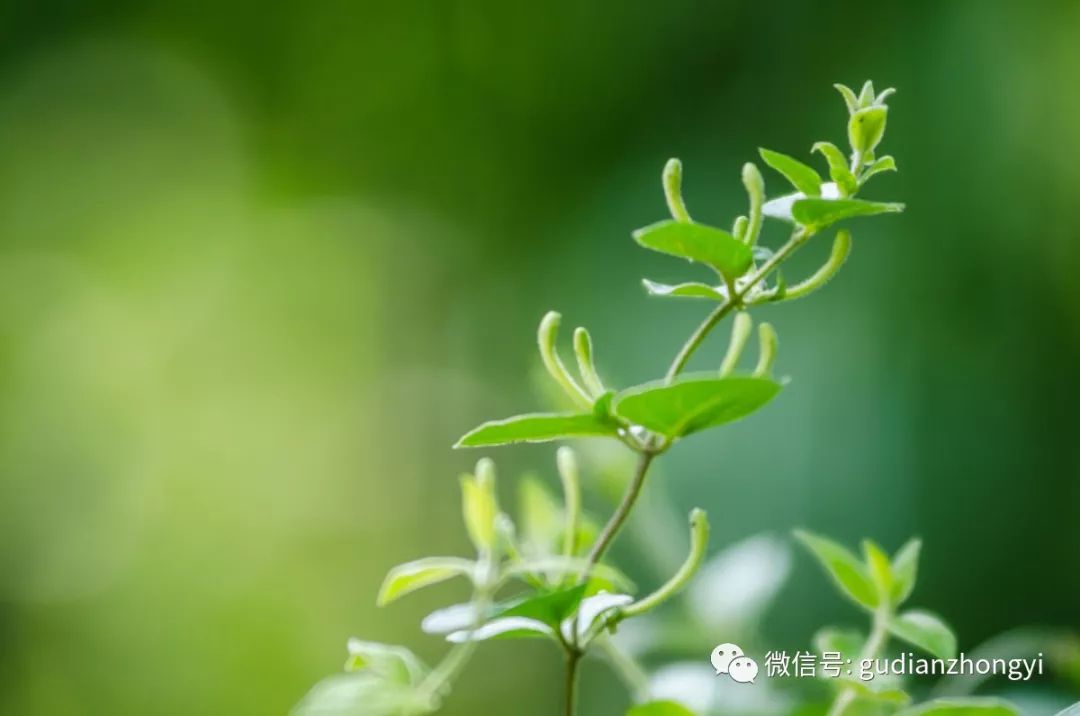 It is said that one day, after returning from treating patients, Sun Simiao saw two sisters drying herbs and asked for tea. After drinking, he felt sweet and refreshing, and upon inquiring, he learned that “this flower starts white and turns golden with time”, so he named it Honeysuckle. Sun realized its medicinal properties, and it later became a key ingredient in many formulas.Like many legends of Chinese herbs, the folklore surrounding Honeysuckle is also poignant. Fifteen hundred years ago, in a village in Central China, there was a divine doctor named Huang who had twin daughters, naturally named Jin Hua and Yin Hua.During a sudden plague with no cure, the sisters prayed to the heavens, willing to become medicine together to relieve the disease. The herbal deity was moved by their sincerity and transformed them into a plant with paired flowers.After being used as medicine, it indeed cured the plague. The villagers, grateful for this, named the herb Honeysuckle and renamed their village “Huang De Village”, now known as Huangde Town in Fengqiu County, Henan Province. It is said that every year, a lively temple fair is held to honor the virtues of the Honeysuckle sisters.
It is said that one day, after returning from treating patients, Sun Simiao saw two sisters drying herbs and asked for tea. After drinking, he felt sweet and refreshing, and upon inquiring, he learned that “this flower starts white and turns golden with time”, so he named it Honeysuckle. Sun realized its medicinal properties, and it later became a key ingredient in many formulas.Like many legends of Chinese herbs, the folklore surrounding Honeysuckle is also poignant. Fifteen hundred years ago, in a village in Central China, there was a divine doctor named Huang who had twin daughters, naturally named Jin Hua and Yin Hua.During a sudden plague with no cure, the sisters prayed to the heavens, willing to become medicine together to relieve the disease. The herbal deity was moved by their sincerity and transformed them into a plant with paired flowers.After being used as medicine, it indeed cured the plague. The villagers, grateful for this, named the herb Honeysuckle and renamed their village “Huang De Village”, now known as Huangde Town in Fengqiu County, Henan Province. It is said that every year, a lively temple fair is held to honor the virtues of the Honeysuckle sisters.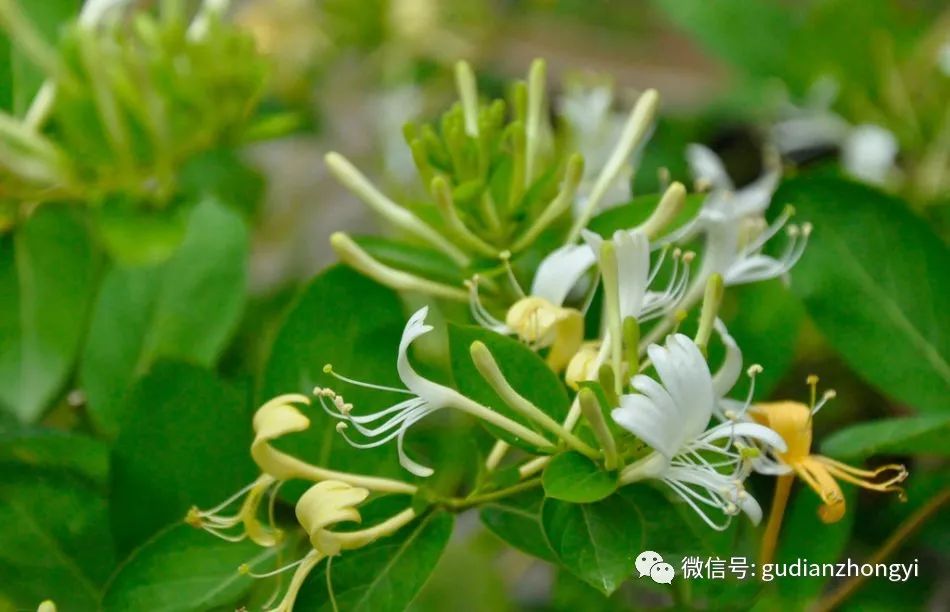 The legend is mystical, but the efficacy of Honeysuckle is real. In nature, some flowers are known for their beauty, like Peonies. Others are famous for their pride, like Plums. Honeysuckle is renowned for its medicinal properties— the most basic and original plant antibiotic. It clears heat and detoxifies, cools the blood and resolves stasis, and is the king of treating sores and ulcers.The Shennong’s Herbal Classic states: “Honeysuckle is cold in nature and sweet in flavor, with the ability to clear heat and detoxify, cool the blood and resolve stasis, primarily treating exterior wind-heat, initial stages of plague, sores, carbuncles, redness, swelling, heat, and pain, as well as purulent blood in stools.”For heat-related colds, with symptoms of dry throat, nasal dryness, dry cough, and tearing.Honeysuckle combined with the yellow-flowered Lian Qiao (Forsythia), tender bamboo leaves, old Schizonepeta, and green mint, boiled gently, creates the famous Yin Qiao San (Yin Qiao Powder).The stems of Honeysuckle are also known as Yin Hua Teng or Ren Dong Teng, which can also be used medicinally. It is sweet in flavor, cold in nature, and enters the Lung and Stomach meridians. It has the effects of clearing heat and detoxifying, dispersing wind and unblocking collaterals, commonly used to treat febrile diseases, heat toxin dysentery, carbuncles, wind-heat bi syndrome, joint redness, swelling, heat, pain, and limited movement.
The legend is mystical, but the efficacy of Honeysuckle is real. In nature, some flowers are known for their beauty, like Peonies. Others are famous for their pride, like Plums. Honeysuckle is renowned for its medicinal properties— the most basic and original plant antibiotic. It clears heat and detoxifies, cools the blood and resolves stasis, and is the king of treating sores and ulcers.The Shennong’s Herbal Classic states: “Honeysuckle is cold in nature and sweet in flavor, with the ability to clear heat and detoxify, cool the blood and resolve stasis, primarily treating exterior wind-heat, initial stages of plague, sores, carbuncles, redness, swelling, heat, and pain, as well as purulent blood in stools.”For heat-related colds, with symptoms of dry throat, nasal dryness, dry cough, and tearing.Honeysuckle combined with the yellow-flowered Lian Qiao (Forsythia), tender bamboo leaves, old Schizonepeta, and green mint, boiled gently, creates the famous Yin Qiao San (Yin Qiao Powder).The stems of Honeysuckle are also known as Yin Hua Teng or Ren Dong Teng, which can also be used medicinally. It is sweet in flavor, cold in nature, and enters the Lung and Stomach meridians. It has the effects of clearing heat and detoxifying, dispersing wind and unblocking collaterals, commonly used to treat febrile diseases, heat toxin dysentery, carbuncles, wind-heat bi syndrome, joint redness, swelling, heat, pain, and limited movement. Harvesting Honeysuckle is quite particular. The buds of Honeysuckle, about 2 cm long and green, should be picked just before blooming. After drying, they can be sewn into a clean cotton cloth to make a pillow for babies, which is an excellent natural medicinal pillow.This is very beneficial for promoting brain development in infants, and Honeysuckle is soft and comfortable, not affecting the shape of the baby’s head, and can also prevent prickly heat in the baby’s neck.The buds that are about to bloom, around 3-4 cm long, are the best for drinking. They should be picked, dried on a bamboo tray, and stored in bags for long-term use. When drinking, take a small amount and brew with boiling water for a superior taste.After blooming, the medicinal properties of Honeysuckle gradually diminish. Although the flowers are beautiful, their medicinal value is not significant, but they can still be picked for tea.
Harvesting Honeysuckle is quite particular. The buds of Honeysuckle, about 2 cm long and green, should be picked just before blooming. After drying, they can be sewn into a clean cotton cloth to make a pillow for babies, which is an excellent natural medicinal pillow.This is very beneficial for promoting brain development in infants, and Honeysuckle is soft and comfortable, not affecting the shape of the baby’s head, and can also prevent prickly heat in the baby’s neck.The buds that are about to bloom, around 3-4 cm long, are the best for drinking. They should be picked, dried on a bamboo tray, and stored in bags for long-term use. When drinking, take a small amount and brew with boiling water for a superior taste.After blooming, the medicinal properties of Honeysuckle gradually diminish. Although the flowers are beautiful, their medicinal value is not significant, but they can still be picked for tea.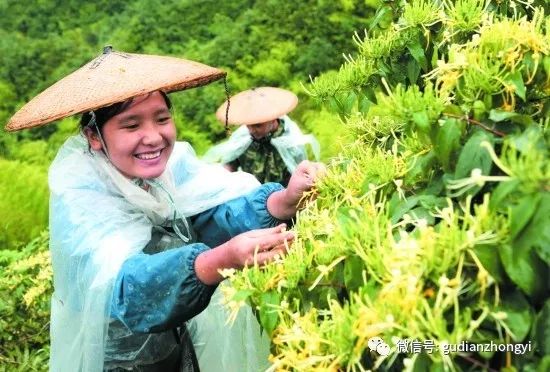 According to some experienced flower farmers, during the drying process, Honeysuckle should not come into contact with iron utensils and should not be turned over. Contact with iron will cause the flowers to lose their medicinal properties; turning them will cause them to turn black, reducing both taste and efficacy when consumed.Honeysuckle can also be used to make porridge—Yin Hua Ju Hua Zhou (Honeysuckle and Chrysanthemum Porridge), with ingredients of 5 grams of Honeysuckle, 5 grams of white chrysanthemum, and 100 grams of japonica rice.First, cook the japonica rice with water to make porridge, and when the porridge is ready, add Honeysuckle and chrysanthemum, and simmer for 5 minutes. This porridge has the effects of clearing heat and detoxifying, dispelling dampness, and stopping dysentery, suitable for summer colds, headaches, red and swollen eyes, and sore throats.Honeysuckle “removes diseases and nourishes the complexion,” indeed. We can also use the decoction of Honeysuckle for bathing, which not only relieves prickly heat, stops itching, and treats acne but also gives the skin a thorough cleanse, with a refreshing herbal fragrance and lush greenery. This method can also treat infants’ eczema, dispelling dampness and toxins without irritating the skin, more effective than floral water.
According to some experienced flower farmers, during the drying process, Honeysuckle should not come into contact with iron utensils and should not be turned over. Contact with iron will cause the flowers to lose their medicinal properties; turning them will cause them to turn black, reducing both taste and efficacy when consumed.Honeysuckle can also be used to make porridge—Yin Hua Ju Hua Zhou (Honeysuckle and Chrysanthemum Porridge), with ingredients of 5 grams of Honeysuckle, 5 grams of white chrysanthemum, and 100 grams of japonica rice.First, cook the japonica rice with water to make porridge, and when the porridge is ready, add Honeysuckle and chrysanthemum, and simmer for 5 minutes. This porridge has the effects of clearing heat and detoxifying, dispelling dampness, and stopping dysentery, suitable for summer colds, headaches, red and swollen eyes, and sore throats.Honeysuckle “removes diseases and nourishes the complexion,” indeed. We can also use the decoction of Honeysuckle for bathing, which not only relieves prickly heat, stops itching, and treats acne but also gives the skin a thorough cleanse, with a refreshing herbal fragrance and lush greenery. This method can also treat infants’ eczema, dispelling dampness and toxins without irritating the skin, more effective than floral water. Daily Health MaintenanceHoneysuckle Tea20 grams of Honeysuckle, decocted in water as a tea or brewed for drinking. Honeysuckle is sweet and cold, aromatic, clears heat without harming the stomach, and dispels evil, adept at treating various heat illnesses, making it an excellent choice for treating sore throats and preventing upper respiratory infections.Honeysuckle and Mint Tea10 grams each of Honeysuckle and mint, steeped in boiling water for 15 minutes, effective for clearing heat and relieving summer heat. For children, external washing can stop itching and repel mosquitoes.Double Flower Carp Soup500 grams of carp, cleaned and cut into pieces, marinated with scallions, ginger, and cooking wine; then simmered with 15 grams each of Honeysuckle and chrysanthemum in a clay pot for 40 minutes, finally seasoned with salt. This soup has the effects of dispersing wind, clearing heat, and promoting diuresis, suitable for headaches, dizziness, edema, and heat in the chest.Honeysuckle is cold in nature; those with spleen and stomach deficiency, weak constitution, liver disease, and women during menstruation should avoid it, and it should not be taken for long periods by anyone.
Daily Health MaintenanceHoneysuckle Tea20 grams of Honeysuckle, decocted in water as a tea or brewed for drinking. Honeysuckle is sweet and cold, aromatic, clears heat without harming the stomach, and dispels evil, adept at treating various heat illnesses, making it an excellent choice for treating sore throats and preventing upper respiratory infections.Honeysuckle and Mint Tea10 grams each of Honeysuckle and mint, steeped in boiling water for 15 minutes, effective for clearing heat and relieving summer heat. For children, external washing can stop itching and repel mosquitoes.Double Flower Carp Soup500 grams of carp, cleaned and cut into pieces, marinated with scallions, ginger, and cooking wine; then simmered with 15 grams each of Honeysuckle and chrysanthemum in a clay pot for 40 minutes, finally seasoned with salt. This soup has the effects of dispersing wind, clearing heat, and promoting diuresis, suitable for headaches, dizziness, edema, and heat in the chest.Honeysuckle is cold in nature; those with spleen and stomach deficiency, weak constitution, liver disease, and women during menstruation should avoid it, and it should not be taken for long periods by anyone.

Consult and Share: Click the upper right corner -> Share to Moments
Add personal WeChat for communication and learning:gudianzy
